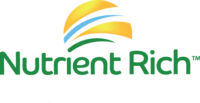One of the biggest, yet most overlooked influences on our eating, the USDA Guidelines, have become more relevant than ever before in the past 10 years.
Whether you know it or not, the USDA Guidelines have likely been influencing the way you’ve eaten your whole life depending on your age. When The Four Food Groups were established 1956, and were then communicated in our schools; the way we started eating would never be the same.
In 2005, after years of countless commentaries like the one written by our associate David Benzaquen of Plant Based Solutions, who recently submitted a USDA dietary commentary, the USDA Guidelines finally recognized that “nutrient density” was the cornerstone of a healthy eating style. It was then that we first launched NutrientRich.com.
In June 2010 they took it one step further. Due to the sharp rise in obesity, acute and chronic disease complications throughout the country the USDA finally came out and stated the following:
“With two thirds of Americans overweight or living on prescription meds, the USDA call on all Americans to eat a more nutrient-rich diet!”
What could be clearer? Then the questions emerge…
- What does it mean to eat a “nutrient-rich diet?”
- With all that talk about eating healthy these days, is it enough for a food to be rich in one or some nutrients or is there a broader definition for what makes a food nutrient rich?
- Is nutrient richness, determined only by what a food contains or also by what it doesn’t contain?
- Does overcooking, which destroys nutrients, still render a nutrient-rich food “nutrient rich”?
- What % of your diet needs to be comprised of nutrient rich foods to still be considered a “nutrient rich diet?”
…
This is something we have investigated for years and will be answering in the next several posts. This answer is very important to the rise of the Superfoodie. The key points below begin this inquiry and soon, you will have a clear answer.
Working Definitions of a Whole Foods, Plant-Based, Nutrient-Rich Diet (or eating style)
- A nutrient rich diet means eating predominantly, up to 90% or more, plant-based, nutrient-rich foods—vegetables, beans, fruits, raw seeds and nuts, and optionally whole grains.
- A nutrient rich diet is guided by a nutrient density chart that reveals the best and healthiest foods—a value based first on micronutrients, vitamins, minerals, phytochemicals, as well as appropriate amounts of the macronutrients water, fiber, health promoting protein, fat and carbohydrate.
- A nutrient rich diet includes raw and cooked foods, with a smaller percentage of cooked foods. It can also be high raw (50-75% raw foods) if you want it to be. Some foods may increase in nutritional value when cooked conservatively, and in some foods, nutrients are neither lost nor destroyed through cooking. (Example: soups.)
- A nutrient rich diet can include small amounts of animal products—ideally wild, grass-fed or farm-raised—if you eat them. Many people feel better including small amounts of animal products in their diet for a variety of reasons, although this is not essential for healthy eating.
- A nutrient rich diet can include some processed foods, as long as nutrient value and integrity are maintained. (Examples: smoothies,
hummus and chopped salads.) - A nutrient rich diet eliminates and/or limits refined foods, in which the nutrients are stripped out and pleasure-stimulating chemicals are either left in or added. These ingredients can cause addiction, over consumption and rapid increase of insulin levels, and lead to a host of health issues and diseases.
- A nutrient rich diet approached creatively, can duplicate the same pleasures derived from traditional junk foods—without the harmful result of overly refined products. You can actually have your cake and eat it too. (Cake and other enjoyable “extras,” while never ideally a dietary staple, can be made from whole, natural, nutrient-dense foods—nutrient value and integrity can be maintained even with some processed foods.)
- A nutrient rich diet can be customized to the individual based on genetic predisposition, blood tests, and prior conditions with the help of qualified nutrition experts and health care practitioners. Environment, present situation, preferences and goals also play a big role.
- A nutrient rich diet does not mean you don’t need to supplement. Supplementation may be essential; for example, Vitamin D, B12, DHA and EPA (omega 3). Necessary supplementation must be determined by qualified nutrition experts and health care practitioners.
- A nutrient rich diet can include processed natural products that provide whole natural foods in or as close to their natural state without refinement, or added salt, oil or sugar in significant quantities.
With these guidelines, you can develop an eating style that’s health-promoting, disease-fighting and works for you; that enables you to eat to live and live to eat, healthfully, joyfully and wisely without ever having to sacrifice taste, health or convenience.
_________________________________________________________________________
John Allen Mollenhauer (John Allen or “JAM,” as his colleagues call him) is a performance coach and lifestyle entrepreneur who has been a leader in the movement towards high-nutrient-density eating for more than 25 years. His pioneering work has led to the founding of a knowledge-based natural products company—Nutrient Rich® Life—as well as the revolutionary Performance Lifestyle® program. John Allen Mollenhauer is widely recognized as a leading authority on how to live a healthy performance lifestyle. John helps people renew their personal power and achieve their goals in life, business, or sport—without selling health and well-being short. He is also the creator of the new Nutrient Rich® Superfoods line: organic, non-gmo superfood products for people who fuel their body right on the go.

